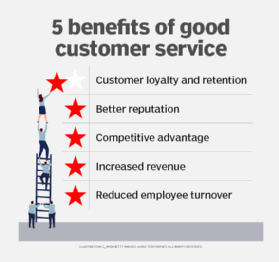customer service charter
What is a customer service charter?
A customer service charter is a document that outlines how an organization promises to work with its customers along with providing insights into how an organization operates. It includes the rules by which an organization interacts with its external customers, including policies, procedures and service-level agreements (SLAs).
Additionally, a charter may also relate to the culture and values of an organization such as mentioning support of volunteer work or employee training.
How a customer service charter works

Customer service charters help organizations manage customer expectations regarding the delivery of products and services, standards of quality and conflict resolution.
A customer service charter begins with an overview of the company and its mission, which includes organizational goals and how they relate to the customer. It then goes into more detail surrounding specific customer service practices. For example, it may document a framework for how to handle customer returns or refunds.
A customer service charter is a valuable tool for instilling confidence in customers, demonstrating a competitive edge and promoting a commitment to healthy relationships. However, a customer service charter can become a negative burden if the organization does not deliver on the established expectations.
Principles of a customer service charter
Successful customer service charters typically implement the following principles:
- Explicit identification of the organization's business goals and target audience.
- Identifying channels of communication and contact.
- Proper handling of customer service standards, customer rights and responsibilities.
- Taking past customer feedback and complaints into consideration.
- Making sure that formatting and style are uniform.
- Formulating a response plan to customer concerns.
- Consistently monitoring, reviewing and updating as necessary.
- Holding staff accountable.
Editor's note: This article was written by Scott Sachs in 2019. TechTarget editors revised it in 2023 to improve the reader experience.







